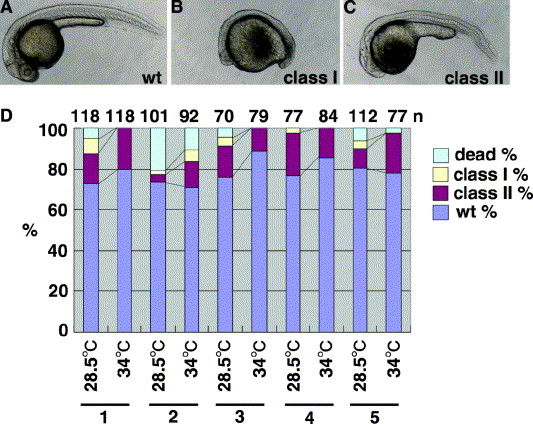Fig. 2 The rk3 mutation is a temperature-sensitive allele. Embryos obtained from crossing five different pairs (1–5, D) of the rk3 heterozygotes were divided into two groups: one was incubated at 28.5 °C and the other at 34 °C. The phenotypes of the embryos were classified into four categories based on morphological inspection. Embryos that died by 24 hp were classified as ‘dead’. Class I embryos survived over 24 hpf, and had a very short or no tail structure and no discernible structure of the tectum and/or the midbrain–hindbrain boundary (MHB) (B). Class II embryos survived over 24 hpf, and had a tail and flattened neural structure with discernible midbrain and MHB structures (C). Embryos that did not show apparent abnormalities at 24 hpf were classified as ‘wild-type’ (wt) (A). The percentages of each class of embryos are indicated in the bar graph (D). Although the phenotypes of the rk3 embryos varied by parent pair, they were more severe in embryos incubated at 28.5 °C than at 34 °C.
Reprinted from Mechanisms of Development, 122(6), Shimizu, T., Yabe, T., Muraoka, O., Yonemura, S., Aramaki, S., Hatta, K., Bae, Y.K., Nojima, H., and Hibi, M., E-cadherin is required for gastrulation cell movements in zebrafish, 747-763, Copyright (2005) with permission from Elsevier. Full text @ Mech. Dev.

